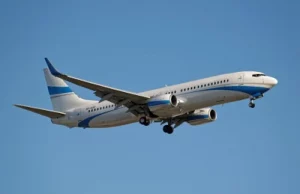Boeing 737 Seating Plan and Details
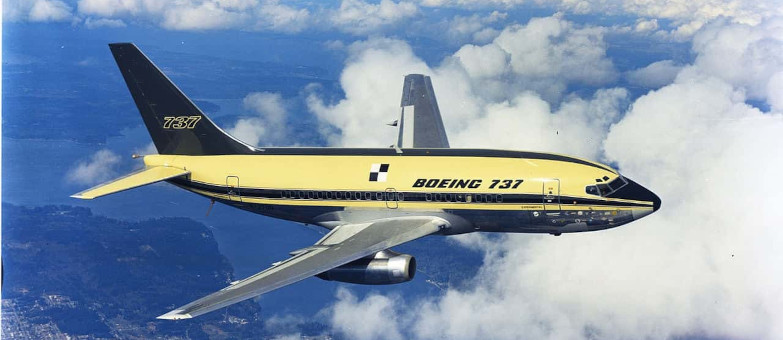
Introduction to the Boeing 737
In the annals of aviation history, few aircraft hold as illustrious a position as the Boeing 737. For decades, this iconic jetliner has been the workhorse of the skies, ferrying millions of passengers across continents and serving as the backbone of countless airlines worldwide. From its humble beginnings in the 1960s to its current status as the most ubiquitous passenger plane in existence, the Boeing 737 has left an indelible mark on the world of aviation.
One of the key factors behind the B737’s enduring success is its versatility. With variants ranging from the smaller 737-100 to the larger 737 MAX series, the aircraft can accommodate a wide range of seating configurations and operational requirements. Whether flying regional routes or transcontinental journeys, the 737 has proven itself to be a capable and dependable workhorse.
But perhaps the most remarkable aspect of the Boeing 737 is its longevity. While other aircraft models have come and gone, the 737 has stood the test of time, remaining a fixture in the skies for over five decades. This longevity is a testament to the aircraft’s robust design and engineering, as well as Boeing’s commitment to continuous improvement and innovation.
Looking ahead, the future of the B737 appears as bright as ever. With thousands of orders on the books and a global fleet numbering in the thousands, the aircraft shows no signs of slowing down.
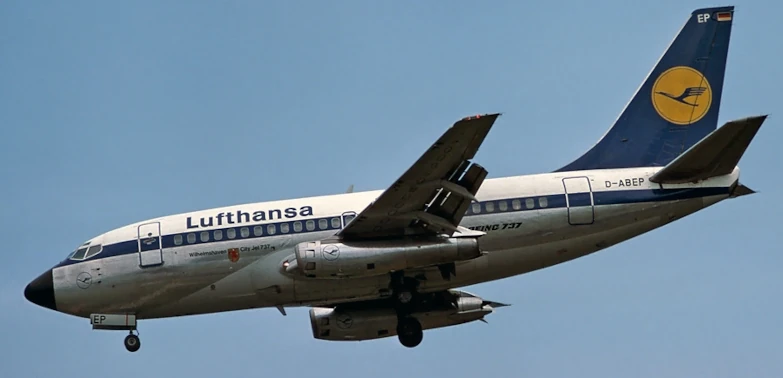
The History of the 737 Family
Development – Original Generation
The development of the new aircraft was seen as an opportunity to replace machines from the 1960s.
The design was put out to tender, and Boeing initially lagged far behind the competing firms. The drawings appeared at a time when other bidders were already being certified. However, the sales department predicted the creation of about 600 new machines for the market and development was forced.
The process was accelerated by borrowing some solutions from the company’s already existing models: Boeing 707, Boeing 727.
In particular, the fuselage shape of the Boeing 737 was borrowed from these aircraft. Nevertheless, the first tests were a failure: the wing was torn off by a 95 per cent load when the load-bearing elements were impacted.
The redesign allowed the creation of a new wing, which had a greater safety margin and could also lift the machine on short runways. In addition, the cruising altitude was increased and fuel efficiency was improved. By using the experience of previous developments and a number of their solutions, it was possible to minimise development time and cost Boeing 737.
The resulting model of engineering had an important advantage over competitors: the seats were 6 in a row (others had 5), which significantly increased the capacity.
At the beginning of 1965 it was announced that the design stage 737 plane was completed.
Development – Classic Era
In the early 1980s, the 737 plane embarked on a significant redesign journey. A notable transformation occurred with the adoption of CFM International CFM56 engines, replacing the JT8D. These high-bypass turbofan engines, larger in diameter, necessitated their suspension under the wing on pylons, abandoning the previous integrated engine design. However, the aircraft’s low ground clearance, reminiscent of the Boeing 707, presented challenges. To mitigate this, components traditionally located beneath the engine were repositioned alongside the compressor section, resulting in the distinctive flattened shape of the engine nacelle. Concurrently, the 737 cockpit received upgrades akin to the Boeing 757 and 767. The inaugural model of the revitalized Classic aircraft family, the 737-300, commenced service in 1984. Subsequently, this era witnessed the introduction of the 737-400 and 737-500 variants, further expanding the Classic generation.
Advancement – NG (Next Generation)
As the 1990s unfolded, the Boeing 737 found itself in a competitive landscape with the emergence of the Airbus A320. Sensing the need to innovate, Boeing unveiled the NG program in 1993.
The 737 NG family comprises the -600, -700, -800, and -900 series, boasting fresh wings, enhanced avionics, and superior engines. It marked a paradigm shift with the introduction of a “glass cockpit,” replacing traditional analog gauges with advanced digital displays. A significant reduction in parts count ensued, and optional winglets were incorporated to enhance fuel efficiency.
In 2001, the 737-900 commenced operations, offering increased passenger capacity compared to its predecessors. By 2005, the iconic “eyebrow” windows were phased out. Boeing then rolled out the 737-900ER, designed for extended range.
Teasing future prospects, Boeing hinted at a comprehensive overhaul for the entire 737 family, potentially christened the 737RS. Noteworthy milestones include the delivery of the 5000th 737 to Southwest Airlines on February 13, 2006, and the 8000th to United Airlines on April 16, 2014.
Boeing 737 Model Range
The airliners were and are produced as 3 families, each with at least two models.
Original
The first family is called the “Original” – this is the basis from which the era of flying 737s began. There are two versions here – the 100 and the Boeing 737 200.
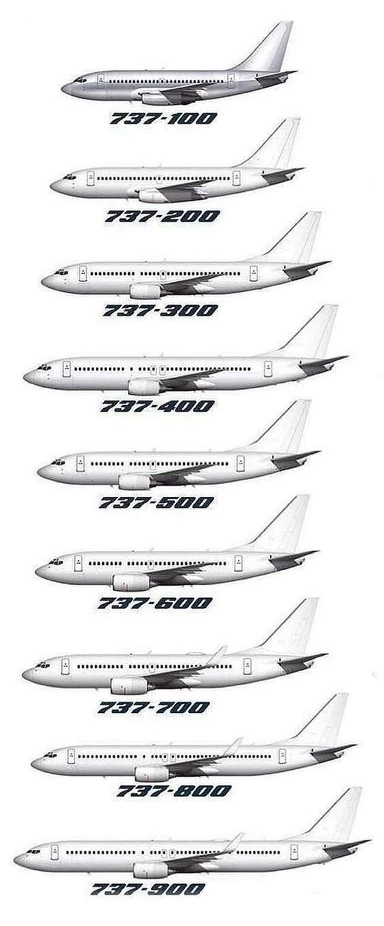
Classic
The Boeing 737 classic family is already more diverse and includes three versions of the aircraft.
New Generation
Further development of the aircraft led to the appearance of the NG family, represented by five versions.
737 Technical Specifications
| Model | 737-100 | 737-200 | 737-300 | 737-400 | 737-500 | 737-600 | 737-700 | 737-800 | 737-900 | 737-900ER |
|---|---|---|---|---|---|---|---|---|---|---|
| Length, m | 28.63 | 30.53 | 33.25 | 36.40 | 31.01 | 31.24 | 33.63 | 39.47 | 42.11 | 42.11 |
| Wingspan, m | 28.35 | 28.88 | 34.32 | |||||||
| Height, m | 11.23 | 11.07 | 12.67 | 12.62 | ||||||
| Fuselage Diameter, m | 3.76 | |||||||||
| Wheelbase, m | 3.54 | |||||||||
| Cabin Width, m | 2.19 | 2.11 | 2.20 | |||||||
| Max. Seating Capacity | 103 | 133 | 149 | 168 | 132 | 130 | 149 | 189 | 189 | 215 |
| Cruise Speed, km/h | 817 | 807 | 852 | |||||||
| Max. Speed, Knots | 350 | 350 | 330 | |||||||
| Range, km | 2592 | 3518 | 4176 | 3815 | 4398 | 5648 | 6230 | 5765 | 5800 | 5925 |
| Ferry Range, km | 3148 | 4444 | 6670 | 5000 | 5200 | 5648 | 6230 | 5765 | 5800 | 5925 |
| Service Ceiling, m | 10,670 | 10,700 | 11,300 | 11,300 | 12,500 | 12,500 | 12,500 | 12,500 | 12,500 | |
| Takeoff Length, m | 1290 | 2058 | 2012 | 2356 | 1860 | 1799 | 1677 | 2241 | 2408 | 2450 |
| Landing Length, m | 1180 | 1350 | 1400 | 1540 | 1360 | 1340 | 1430 | 1630 | 1700 | 1750 |
| Max. Takeoff Weight, kg | 43,998 | 45,359 | 56,472 | 62,823 | 52,390 | 56,245 | 70,080 | 79,015 | 79,000 | 85,200 |
| Empty Weight, kg | 26,581 | 27,170 | 31,479 | 33,189 | 31,311 | 36,378 | 37,648 | 41,413 | 42,901 | 44,677 |
| Fuel Capacity, liters | 13,399 | 13,096 | 20,102 | 20,102 | 20,102 | 26,022 | 26,022 | 26,022 | 26,022 | 26,025 |
| Fuel Capacity, kg | 10,758 | 10,515 | 16,141 | 16,141 | 16,141 | 20,894 | 20,894 | 20,894 | 20,894 | 20,894 |
| Specific Fuel Consumption, g/passenger-km | – | – | 25.5 | 20.9 | 25.5 | – | – | – | – | – |
| Engines | P & W JT8D-7 | P & W JT8D-9/9A | CFM56-3B1 | CFM56-3B2 | CFM56-3B1 | CFM56-7B18 CFM56-7B20 CFM56-7B22 | CFM56-7B20 CFM56-7B22 CFM56-7B24 CFM56-7B26 CFM56-7B27 | CFM56-7B24 CFM56-7B26 CFM56-7B27 | CFM56-7B24 CFM56-7B26 CFM56-7B27 | CFM56-7B24 CFM56-7B26 CFM56-7B27 |
| Thrust, t | 2 x 5.7 | 2 x 6.6 | 2 x 9.1 | 2 x 10 | 2 x 9.1 | 2 x 8.9 2 x 9.3 2 x 10.3 | 2 x 9.3 2 x 10.3 2 x 11.0 2 x 11.9 2 x 12.4 | 2 x 11.0 2 x 11.9 2 x 12.4 | 2 x 11.0 2 x 11.9 2 x 12.4 | 2 x 11.0 2 x 11.9 2 x 12.4 |
B737 Design Features
The design of the Boeing 737 is characterised by balanced proportions and functionality combined with operational efficiency. Externally, it has a typical narrow-body airframe shape, with a sharp nose and a rapidly descending aft section.
Key design features include:
Wings: the B737 is typically fitted with straight wings with optimum aerodynamics to maximise flight efficiency. In recent models, advanced wing designs have been introduced to further reduce drag and fuel consumption.
Cockpit: The Boeing 737 cockpit design has evolved over time to incorporate the latest advances in aviation ergonomics and display technology.
Fuselage: The B737 fuselage is a standard configuration for narrow-body aircraft, providing an optimal balance between capacity and aerodynamic efficiency. Different modifications offer different fuselage lengths and passenger capacities.
Tailplane: The Boeing 737 tailplane consists of a vertical and horizontal tailplane, providing stability and control in flight. In the latest models, improved control systems and aerodynamic elements can be introduced.
Engines and engines: Depending on the model and generation, the 737 is equipped with different types of engines, such as the CFM56 and LEAP for MAX models. These engines provide high thrust and economical fuel consumption.
The length of Boeing 737 aircraft varies across different models, with dimensions ranging from 28.63 meters for the initial 737-100 model to 42.11 meters for the 737-900 variant.
The cockpit was originally equipped with analogue instruments. Nowadays, all passenger aircraft are equipped with digital control systems with LCD displays. Each new model has a modified cabin design, with the manufacturer trying to make them more and more comfortable.
Fuel system: The airliner has 3 fuel tanks, which are located in the centre wing and wings. The centre tank is used first and then the wing tanks. The fuel system includes two pumps in each tank. The maximum capacity of the tanks is 15,600kg.
Landing gear: The aircraft has a three-wheel landing gear with a steering rack at the front and two wheels on each side rack. During flight, the wheels retract into special recesses in the centreplane, which have no flaps. The newest aircraft models are equipped with carbon brakes, which have less mass and longer life.
The Boeing 737 seating arrangement within passenger cabins varies depending on the aircraft’s size. Larger planes typically feature two compartments: business and economy class, while some models exclusively offer economy class seating. Optimal seating choices are generally found near the front of the cabin. While seats towards the tail may experience more turbulence-induced shaking, this section is often considered the safest.
Prior to departure, passengers, especially those with flight anxiety, are encouraged to familiarize themselves with the Boeing 737 seat plan. Selecting aisle seats allows for easy movement and access to facilities throughout the flight. Alternatively, window seats are ideal for those inclined to rest, providing uninterrupted views of the skies and terrain below without disturbance.
Boeing 737 Seating Plan
On the Boeing 737, seat numbering begins at the front, with the safest positions typically near the cockpit and wing areas housing emergency exits. However, it’s advisable not to seat passengers with disabilities or children near emergency exits, reserving these spots for able-bodied individuals capable of assisting in emergencies. The aircraft accommodates a total of 203 passengers.
Business Class
The first five rows near the cockpit are allocated to business class. There are four seats in each row. Two on each side according to the 737 seating plan. The seats in this cabin of Boeing are wider. They are soft and very comfortable. There is a large distance between the rows. Air passengers can safely recline their seat back, stretch their legs and, without disturbing anyone, be in a semi-reclining position during the flight. Seats labelled A and G are located by the portholes. It is undesirable to choose the first row, as it is close to the lavatory. The second and third rows are the best.
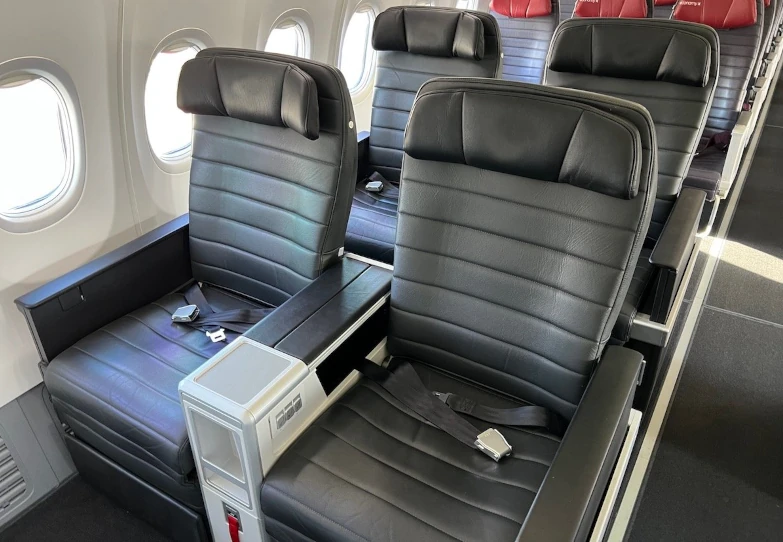
Economy Class
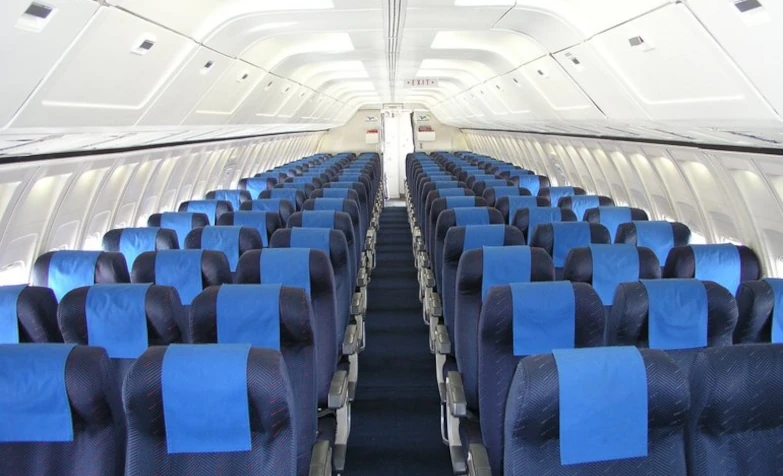
The Boeing 737 seating plan arrangement ranges from row 6 to 24 or 33, offering six seats per row, evenly distributed on each side with a slight backward tilt. Rows are separated by a distance of approximately 0.75 meters.
To enhance comfort, it’s advisable to avoid rear seats due to proximity to the restroom. Opting for front seats is advantageous as attendants typically initiate meal service from this area, granting passengers in these rows preferential access to food and beverage choices.

